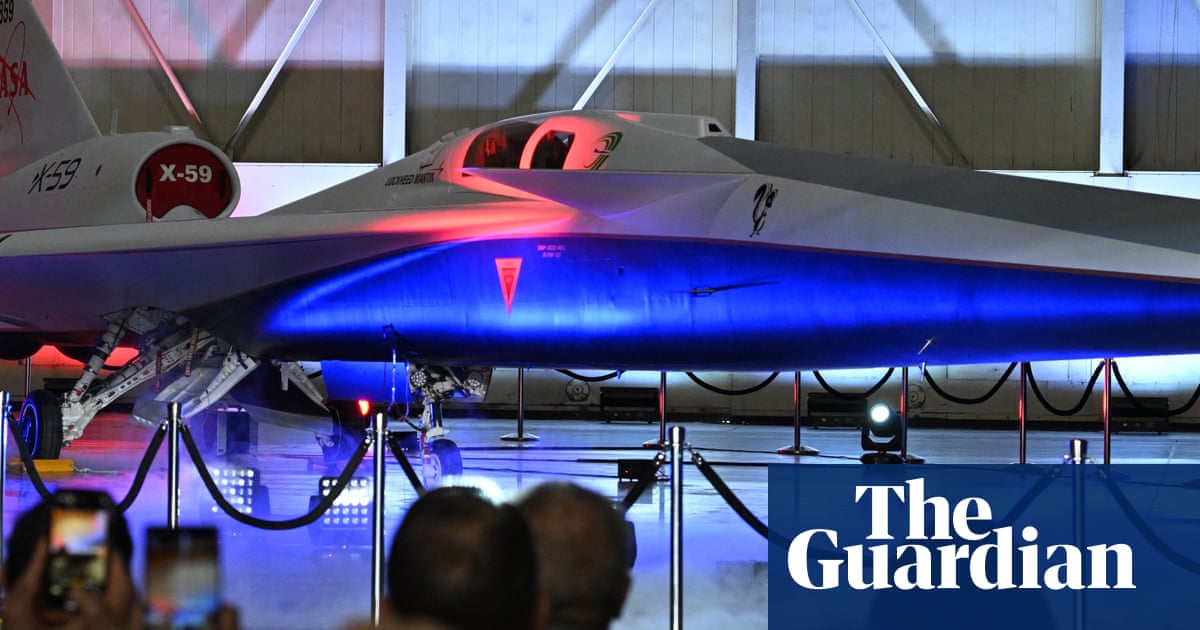- cross-posted to:
- astronomy@mander.xyz
- worldnews@lemmy.ml
- cross-posted to:
- astronomy@mander.xyz
- worldnews@lemmy.ml
In launch event on Friday, agency shared plans to test over US cities to see if it’s quiet enough by engaging ‘the people below’
Nasa has unveiled a one-of-a-kind quiet supersonic aircraft as part of the US space agency’s mission to make commercial supersonic flight possible.
In a joint ceremony with Lockheed Martin Skunk Works in Palmdale, California, on Friday, Nasa revealed the X-59, an experimental aircraft that is expected to fly at 1.4 times the speed of sound – or 925mph (1,488 km/h).
The aircraft, which stands at 99.7ft (30.4 metres) long and 29.5ft wide, has a thin, tapered nose that comprises nearly a third of the aircraft’s full length – a feature designed to disperse shock waves that would typically surround supersonic aircraft and result in sonic booms.



Pleas explain why you think either of those things are true.
Supersonic jets already exist and use dramatically more fuel to carry fewer passengers. Making them not work this way would be an amazing breakthrough that would have merited some mention in the article.
Because of the high fuel use and limited space, this technology will be only used by the ultra-wealthy and will considerably accelerate climate change. It is an absolutely disastrous use of public funds.
the coefficient of drag goes up exponentially the faster you go. As for fewer people, I used my eyes to see that there’s not a lot of room for passengers.
Not OP:
The more you try to fly faster through any fluid (like earth’s atmosphere) the more drag you face. Hence you need a lot more energy (orders of magnitude more, possibly exponentially more). This equates to more fuel burn.
Also since you are going supersonic… you really cannot build big. Also, these things are quite expensive to build, maintain and run. Hence only the top 1% of folk could afford to fly in these things.
I’m no expert but I’ll take a stab at it. The faster you go the more drag you get on the fuselage that would need to be compensated for with more fuel (unless some neat mechanic helps to mitigate that). Take a look at a conventional jet airplane and you’ll notice it’s capable of holding passengers from nose cone to tail reasonably well due to its cylindrical shape. The X-59’s design has some very interesting geometric features that would give less internal volume for passengers (unless it can be modified to improve for this).
If that’s not reasonable enough then just look at the kinetic energy equation, KE=1/2mv^2. Compared to a velocity of a jet airliner going at 900km/hr versus this plane’s Mach 1.4 (roughly 1500 km/hr) it takes roughly 2.78 times more energy to move a vehicle at that speed (not accounting for drag, energy efficiency, etc.). Is it worth spending roughly 2.78 times more fuel to get to a place 1.67 times faster?
Please explain why you don’t think either of those things are true.
well, that’s 5 answers and no reply from you, i assume you’re busy campaigning to ban short-haul flights?